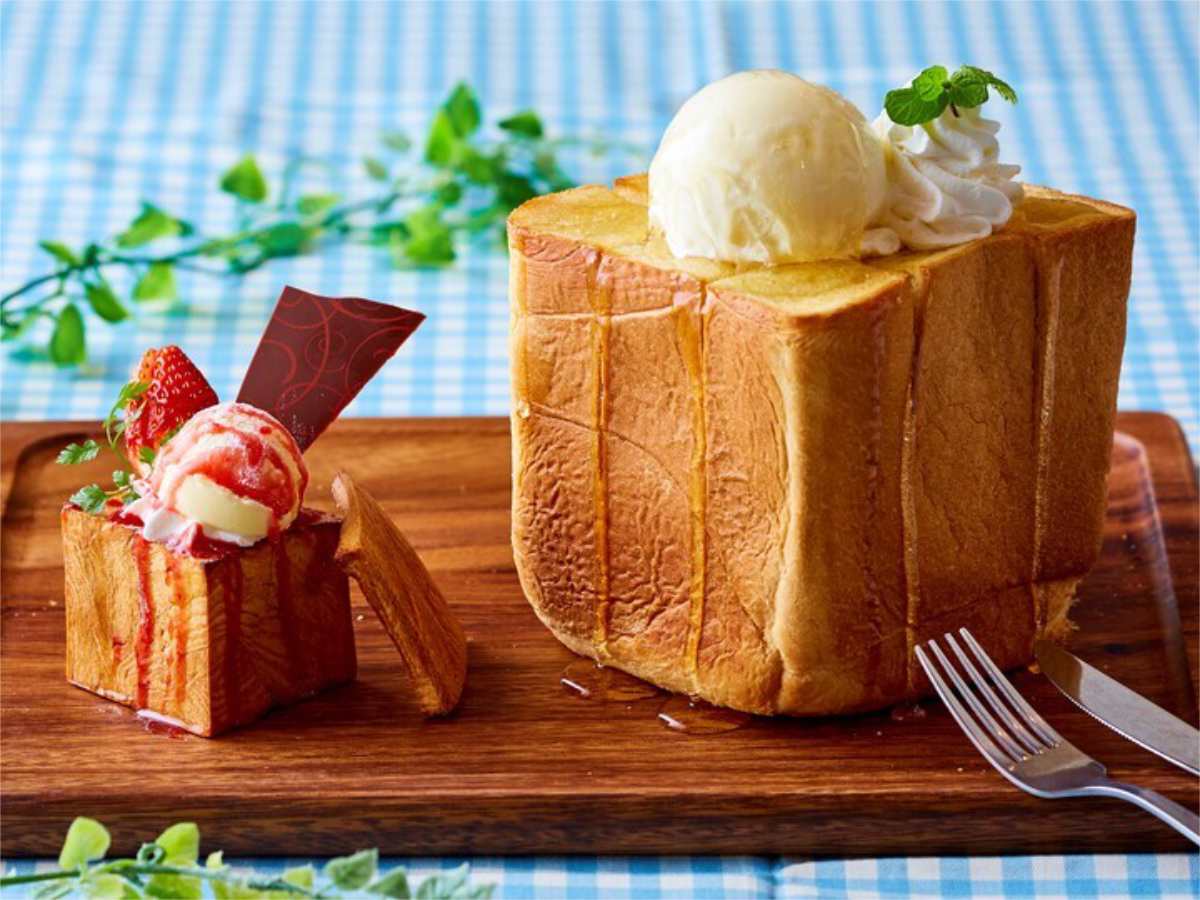
Source: Value Press
Karaoke PASELA works on SDGs by cutting food waste in its huge honey toast cubes
- Tags:
- food waste / Karaoke / SDGs
Related Article
-

Limited edition skull tea recreates 300-year-old techniques to celebrate famous Japanese painter and monk duo
-

The world’s first spirits made from fermented wood to be developed and sold in Japan
-

Fan art to revitalize Akihabara during pandemic to be displayed at “Draw my Akiba” exhibit
-

SOUP ONLY – serving up noodle-less Tantanmen in the battle against food wastage
-

Visually impaired Vtuber Cocco Hitomi’s 2nd single “cute girl” tops Brunei music chart
-

Prevent food waste by enjoying these delicious fruit pastries from Paul Bakery in Japan


If you’ve ever wandered the streets of a major city in Japan whilst on the hunt for something sweet to eat, you’ve most likely come across ‘Honey Toast’ – a gigantic cube of bread slathered in whipped cream, sauce and other decadent toppings.
Also known as Shibuya Toast or Brick Toast , the dessert is a classic nod towards the peak of Japan’s economic bubble of the 80’s. With it’s over-the-top appearance it comes as no surprise that this dish is said to have originated in Tokyo’s Shibuya ward.
Despite the fact that these dishes are made up of what can only be described as at least half a loaf of family-sized bread, they remain an ever popular item on food menus and, through the power of sns influencers, are continuing to gain attention around the world.
Understandably a dessert of this size doesn’t come without its drawbacks – the biggest of which being the amount of food waste produced when customers overestimate the amount of food their body can consume in one sitting.
At Karaoke PASELA – a franchised entertainment company offering karaoke, party halls and dining – a recent study revealed that of the 43,000 orders of Honey Toast made each year, around 20% of customers leave the dish uneaten, with around 30% of the loaf remaining. When added up, these percentages indicate that the company is throwing away roughly 2,580 whole loaves of Honey Toast annually.
Such a frightening figure prompted Karaoke PASELA to investigate further, and after diving in, they discovered that the real reason why so many loaves of Honey Toast go unfinished, is not because of their humongous size, but is in actuality caused by the consumer running out of tasty toppings to pair the bread with.
Thinking about the structure of the Honey Toast dish, it’s easy to see how this problem can happen. We eat from the top down, so by the time we’ve reached the lower half of the bread, the sweet toppings have already disappeared, and what we end up with is – to put it bluntly – a boring piece of white bread.
In an attempt to curb this unnecessary wastage and contribute positively towards Japan’s SDGs (Sustainable Development Goals), Karaoke PASELA has come up with an additional menu item that will fill up stomachs, rather than the trash can.
The new menu sees the introduction of a drizzling sauce to all Honey Toast orders. Instead of fumbling over the thought of gulping down that typically boring final third of bread, you can now look forward to it with the help of a pot of tasty drizzling sauce.
There are three flavours to choose from – Salted Caramel, Crème Brûlée and Chocolate – all of which are original recipes created by Karaoke PASELA’s pastry chef.
With the new additions to the menu, you may be uncertain which sauce to go for, that’s why Karaoke PASELA has a recommendation menu for combinations:
Ripe Chocolate Banana Honey Toast & Salted Caramel Drizzling Sauce
French Maple Toast & Chocolate Drizzling Sauce
Hot Caramel Pudding Honey Toast & Crème Brûlée Drizzling Sauce
In addition to Karaoke PASELA’s new menu, there are other ways you can enjoy Honey Toast without leaving a dish unfinished. At ⅛ of the size of Karaoke PASELA’s standard Honey Toast, the Petite Hanito is the perfect size for a single person to enjoy as a dessert after a meal.
Karaoke PASELA also offers takeout containers to customers who can not finish their dish. Not limited to Honey Toast, customers are encouraged to bring home any leftovers as a way to help the company curb food wastage. Each container can be purchased for 100 yen.
The revised menu at Karaoke PASELA went live from the 9th of November, and is being implemented at the following branches:
Shinjuku Main Store
Shinjuku Yasukuni Dori Store
Shinjuku Kabukicho Store
Ikebukuro Main Store
Ikebukuro West Exit Store
Shibuya Store
Ueno Koenmae Store
Ueno Okachimachi Store
AKIBA Multi-Entertainment Store
Akihabara Electric Town Store
Akihabara Showa Dorikan
Ginza Store
Roppongi store
Akasaka store
Yokohama Hamaball Ias store
Yokohama Kannai store
Namba Dotonbori store